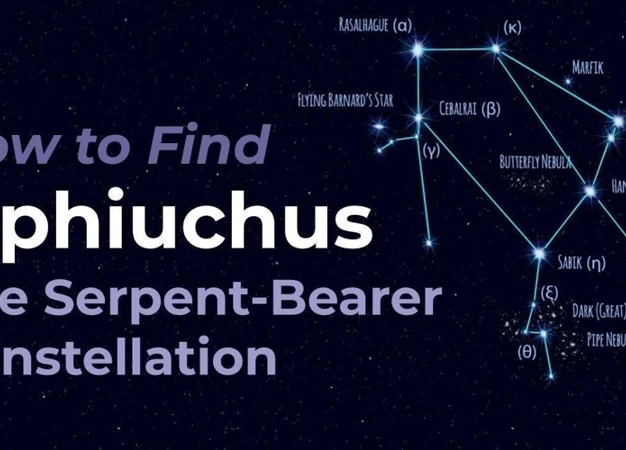Have you ever wondered about the mysterious influence of Ophiuchus on astronomy and astrological interpretations? Prepare to delve into an intriguing realm where science and mythology intertwine. As we embark on this cosmic journey, we will explore the enigmatic Ophiuchus constellation, its significance in ancient astronomy, and its role in both Eastern and Western astrology. Join us as we unveil the secrets of Ophiuchus and its captivating impact on modern science, popular culture, and the ever-evolving field of astrology. Prepare to have your mind illuminated by celestial wonders and to challenge your preconceived notions of the zodiac.
Contents
- The Ophiuchus Constellation
- Ophiuchus in Ancient Astronomy
- Ophiuchus and Modern Astronomy
- Ophiuchus in Popular Culture
- Interpreting Ophiuchus in Astrology Today
- Conclusion
-
Frequently Asked Questions
- 1. Is Ophiuchus a part of the zodiac? No, Ophiuchus is not traditionally considered one of the zodiac signs. It lies along the ecliptic, the path the Sun appears to take across the sky, but the zodiac typically consists of twelve signs. 2. What is the mythological significance of Ophiuchus?
- 3. How many stars are in the Ophiuchus constellation?
- 4. Can Ophiuchus be seen from both hemispheres?
- 5. Does Ophiuchus have any neighboring constellations?
- 6. Has Ophiuchus played a role in any significant scientific discoveries?
- 7. Can Ophiuchus be seen with the naked eye?
- 8. Does Ophiuchus have any cultural significance?
- 9. Are there any notable deep-sky objects in Ophiuchus?
- 10. Is there any ongoing astronomical research related to Ophiuchus?
- References
-
Frequently Asked Questions
- 1. Can Ophiuchus be seen in the night sky?
- 2. How was Ophiuchus discovered?
- 3. Why is Ophiuchus not included in the traditional zodiac signs?
- 4. Does Ophiuchus have a significant influence on astrology?
- 5. Is Ophiuchus associated with any specific traits or characteristics?
- 6. Are there any notable scientific discoveries related to the Ophiuchus constellation?
- 7. How has Ophiuchus been portrayed in literature and art?
- 8. Has Ophiuchus made an impact on popular media?
- 9. Can Ophiuchus be incorporated into horoscope readings?
- 10. Is there a controversy surrounding Ophiuchus and the Zodiac?
- References
- Read More
The Ophiuchus Constellation
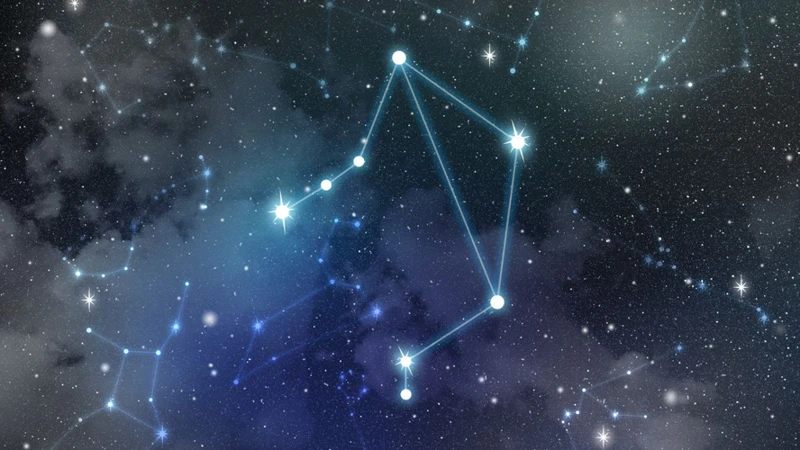
The Ophiuchus constellation, also known as the “Serpent Bearer,” is a fascinating celestial entity nestled within the vast expanse of the night sky. Located near the celestial equator, it stretches across an area of about 948 square degrees in the southern hemisphere. Ophiuchus is composed of several prominent stars, each with its own unique importance. One of the brightest stars in the constellation is Rasalhague, a captivating binary star system that emits a pale-yellow hue. Another notable star is Barnard’s Star, one of the closest known stars to our solar system. The crowning jewel of Ophiuchus is the impressive globular cluster known as Messier 10, consisting of thousands of stars tightly packed together. Ophiuchus is often depicted as a man holding a serpent, symbolizing the Greek myth of Asclepius, the god of medicine and healing. This depiction gives the constellation its distinctive shape and meaning. The intricate details and mysterious allure of Ophiuchus have captured the imagination of astronomers and stargazers throughout history, making it a captivating subject of study and the source of countless celestial wonders.
Ophiuchus in Ancient Astronomy
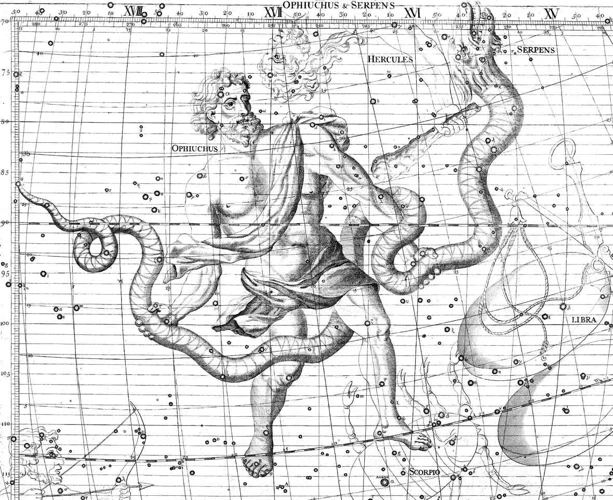
In ancient astronomy, Ophiuchus held a significant place among the celestial observations of various civilizations. The enigmatic nature of this constellation intrigued the minds of ancient astronomers, who sought to decipher its meaning and explore its significance in the cosmos. In Greek mythology, Ophiuchus was associated with the legendary figure of Asclepius, the healer and son of Apollo. It was believed that Asclepius possessed divine powers of medicine and could resurrect the dead. As a testament to his extraordinary abilities, he was placed among the stars as the constellation of Ophiuchus. In Egyptian mythology, Ophiuchus was linked to the god Imhotep, who was also revered as a deity of healing and medicine. The presence of Ophiuchus in ancient cultures showcases the importance placed on healing and the celestial connections to the art of medicine. Ophiuchus played a role in astrological interpretation, as ancient astronomers may have observed the movements of celestial bodies within its vicinity for their astrological predictions. While ancient astronomy holds a wealth of knowledge and cultural significance, unraveling the true depths of the Ophiuchus constellation continues to capture the curiosity of modern-day astronomers and stargazers alike. For more fascinating insights into ancient Egyptian mythology, be sure to explore the mysteries hidden within the pages of the Book of the Dead.
The Enigma of Ophiuchus
The enigma of Ophiuchus lies not only in its celestial presence but also in its mythical and cultural significance. Ophiuchus has intrigued astronomers and astrologers for centuries, leading to various interpretations and debates. In ancient Greek mythology, Ophiuchus is associated with the tale of Asclepius, a skilled healer who possessed the ability to resurrect the dead. This mythological connection underscores the association of Ophiuchus with healing and medicine. Interestingly, Ophiuchus does not align neatly with the traditional twelve zodiac signs, which has sparked discussions and controversy among astrologers. Some argue that Ophiuchus should be recognized as the 13th zodiac sign, adding a new dimension to astrological interpretations. Others incorporate Ophiuchus as a separate constellation that influences astrological readings in conjunction with the traditional zodiac. The enigmatic nature of Ophiuchus invites us to explore its multifaceted history, mythological origins, and its potential impact on astrological understandings. Through unraveling the secrets surrounding Ophiuchus, we can uncover a deeper understanding of our celestial surroundings and the intricate tapestry of human interpretation.(Unraveling the Book of the Dead: Egyptian Mythology)
Ophiuchus in Ptolemaic Astrology
In Ptolemaic astrology, Ophiuchus held a significant place within the zodiac system. According to the ancient Greek astronomer and astrologer, Ptolemy, Ophiuchus was considered the thirteenth zodiac sign, positioned between Scorpio and Sagittarius. This addition to the zodiac was based on the proximity of the sun during the period between November 29 and December 17. Those born during this time were believed to possess the traits and characteristics associated with Ophiuchus. The inclusion of Ophiuchus in Ptolemaic astrology added depth and complexity to the zodiac system, allowing for more diverse interpretations of an individual’s astrological profile. While not widely recognized in modern astrology, the influence of Ophiuchus in Ptolemaic astrology shed light on the fluidity and adaptability of astrological interpretations, emphasizing the ever-evolving nature of the study of the cosmos and its impact on individuals’ lives. To further explore the rich tapestry of ancient astrology, one can delve into realms such as Ancient Egyptian trade and commerce or the celestial hunting dogs known as Canes Venatici.
Ophiuchus in Eastern Astrology
Ophiuchus holds a unique place in the realm of Eastern astrology, where its influence is revered and interpreted in various ways. In Chinese astrology, Ophiuchus is associated with the animal sign Snake, believed to possess wisdom, intuition, and healing abilities. Those born under the Snake sign are considered to be passionate, insightful, and determined individuals. In Japanese astrology, Ophiuchus is known as Hebitsukai-Za, or the Serpent Bearer. People born under this sign are said to possess a magnetic and charismatic presence, as well as strong spiritual and healing energies. In Indian astrology, Ophiuchus is regarded as the 13th zodiac sign and is associated with the nakshatra (lunar mansion) called Jyeshtha. Individuals born under this sign are believed to possess a courageous and passionate nature, as well as deep intuition and transformative abilities. Ophiuchus in Eastern astrology introduces a new dimension to the zodiac system, offering fresh perspectives and interpretations that expand our understanding of astrological influences on personality and destiny. Its presence in Eastern astrology adds a touch of mystique and diversity to the rich tapestry of cosmic lore and is a testament to the universal fascination with this enigmatic constellation.
Ophiuchus and Modern Astronomy
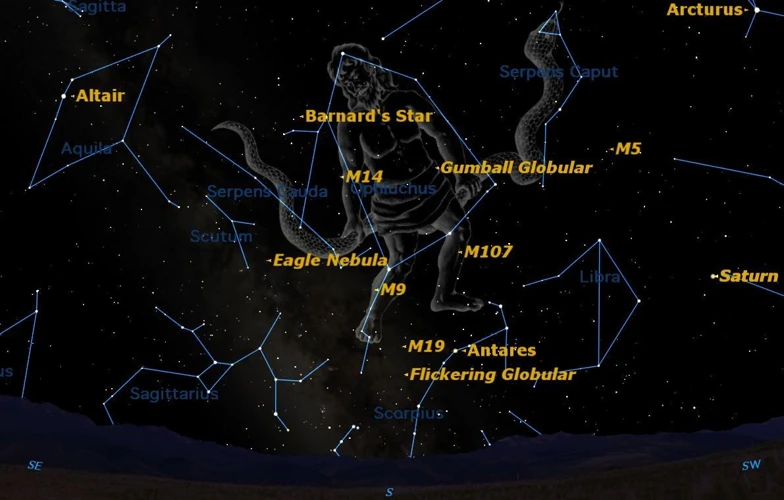
Ophiuchus has made significant contributions to modern astronomy, both in terms of scientific discoveries and sparking debates within the field. Scientists have made remarkable observations and breakthroughs in the study of Ophiuchus, shedding light on its characteristics and role in the cosmos. One notable scientific discovery related to Ophiuchus is the identification of a supermassive black hole at the center of our galaxy, known as Sagittarius A* (pronounced “Sagittarius A-star”). This black hole, located in the direction of Ophiuchus, has provided valuable insights into the behavior and dynamics of these enigmatic cosmic entities. Ophiuchus has also played a role in the controversy surrounding the zodiac. Some astronomers argue that the inclusion of Ophiuchus as the 13th zodiac sign would require a realignment of the dates associated with each zodiac sign. This debate has sparked discussions among astronomers, astrologers, and enthusiasts alike, presenting contrasting perspectives on the interpretation and significance of Ophiuchus within astrology. As modern telescopes and scientific techniques continue to advance, the study of Ophiuchus and its connection to astronomy will undoubtedly unveil more mysteries and contribute to our broader understanding of the universe.
Scientific Discoveries and Ophiuchus
Scientific discoveries involving Ophiuchus have shed light on the secrets of the universe and expanded our understanding of the cosmos. One significant finding is the detection of black holes within the constellation. In recent years, astronomers have identified several black holes located in Ophiuchus, including the supermassive black hole located at the center of the galaxy Ophiuchus A. This discovery has allowed researchers to study the behavior and effects of black holes, offering valuable insights into their role in the evolution of galaxies. Another breakthrough related to Ophiuchus is the discovery of exoplanets within the constellation’s boundaries. By using advanced telescopes and observational techniques, scientists have detected multiple exoplanets orbiting stars in Ophiuchus, some of which lie within the habitable zone, where liquid water could potentially exist. These findings have fueled the search for extraterrestrial life and expanded our knowledge of planetary systems beyond our own. The study of Ophiuchus continues to unravel the mysteries of the universe, with each new scientific discovery bringing us closer to unlocking the secrets of our celestial surroundings.
Ophiuchus and the Zodiac Controversy
The presence of Ophiuchus has sparked a heated controversy within the realm of astrology. Traditionally, the zodiac consists of twelve signs, each representing a different period of the year. However, due to the Earth’s axial precession, the alignment of constellations has shifted over time. This has led some astrologers to argue for the inclusion of Ophiuchus as the thirteenth zodiac sign. Ophiuchus’s position in the ecliptic, the apparent path of the Sun, falls between Scorpio and Sagittarius. Proponents of the thirteenth sign believe that the influence of Ophiuchus can offer a fresh perspective on personality traits and astrological readings. However, the addition of Ophiuchus has faced criticism and resistance from many astrologers who adhere strictly to the traditional zodiac system. They argue that introducing a new sign would disrupt the established astrological framework and alter interpretations for millions of people. The debate surrounding Ophiuchus and the zodiac controversy continues to spark discussions and debates among astrology enthusiasts and experts, highlighting the ever-evolving nature of this ancient practice.
Ophiuchus in Popular Culture
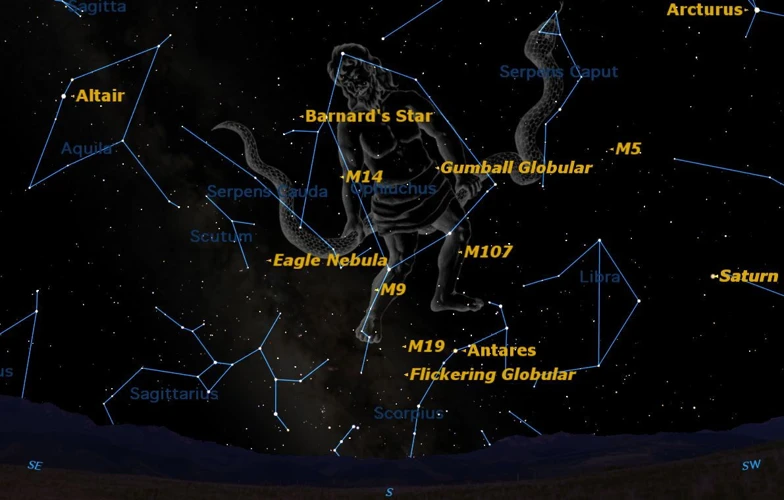
Ophiuchus has also found a prominent place in popular culture, inspiring various forms of artistic expression and capturing the fascination of creative minds. In literature and art, Ophiuchus often represents a symbol of wisdom, healing, and transformation. It has been featured in numerous works, such as novels, poems, and paintings, as a representation of the human quest for knowledge and spiritual enlightenment. For example, in the book “Unraveling the Book of the Dead,” Ophiuchus is mentioned in the context of Egyptian mythology and its connection to the afterlife. This celestial figure has been depicted in art through beautiful illustrations, where the mythical serpent bearer is seen holding a serpent or interacting with other zodiac signs. Ophiuchus’ captivating presence extends beyond the pages of books and the strokes of the artist’s brush. It has also made appearances in various media forms, including movies, television shows, and video games. These portrayals often leverage the mysterious nature of Ophiuchus, incorporating it into captivating storylines and characters. From ancient mythology to modern pop culture, Ophiuchus continues to inspire and fascinate, leaving an enduring mark on the fabric of human imagination.
Ophiuchus in Literature and Art
Ophiuchus, with its intriguing symbolism and enigmatic nature, has made its way into the realms of literature and art, leaving an indelible mark on creative expressions. In literature, Ophiuchus has been referenced in various works, often associated with themes of healing, wisdom, and mysticism. One notable example is the renowned fantasy series “His Dark Materials” by Philip Pullman, where the protagonist Lyra Belacqua discovers her true identity as the “serpent bearer” and embarks on a transformative journey. Ophiuchus also appears in poetry, such as the thought-provoking verses of Rainer Maria Rilke, where the constellation’s influence is used metaphorically to explore complex human emotions and existential questions. In art, Ophiuchus has been depicted in a myriad of ways, from ancient Egyptian hieroglyphs to contemporary paintings and sculptures. Artists often draw inspiration from the serpent-bearing figure, emphasizing its mystical aura and connection to healing. The depiction of Ophiuchus in art serves as a visual representation of the constellation’s influence on the human psyche and the ever-present quest for knowledge and enlightenment. It is through literature and art that Ophiuchus finds a voice, inviting us to explore its profound meaning and discover new dimensions of our own existence.
Media Representations of Ophiuchus
Media representations of Ophiuchus have been relatively scarce compared to other constellations, but they do exist and have made an impact on popular culture. One notable example is the inclusion of Ophiuchus as a prominent character in literature and art. In Neil Gaiman’s novel “American Gods,” the character Mr. Nancy, also known as Anansi, embodies the traits associated with Ophiuchus. Mr. Nancy is depicted as a cunning and resourceful individual, symbolizing the transformative and healing qualities often attributed to Ophiuchus. This representation showcases the influence of Ophiuchus in storytelling, highlighting its ability to captivate and inspire the imagination. In visual art, Ophiuchus has been depicted through various mediums, such as paintings and illustrations. Artists often explore the serpent-bearing aspect of Ophiuchus, using symbolism to convey themes of wisdom, healing, and the struggle between good and evil. While media representations of Ophiuchus may be less prevalent compared to other zodiac signs, they provide unique and thought-provoking perspectives that contribute to the rich tapestry of cultural interpretations surrounding this enigmatic constellation.
Interpreting Ophiuchus in Astrology Today
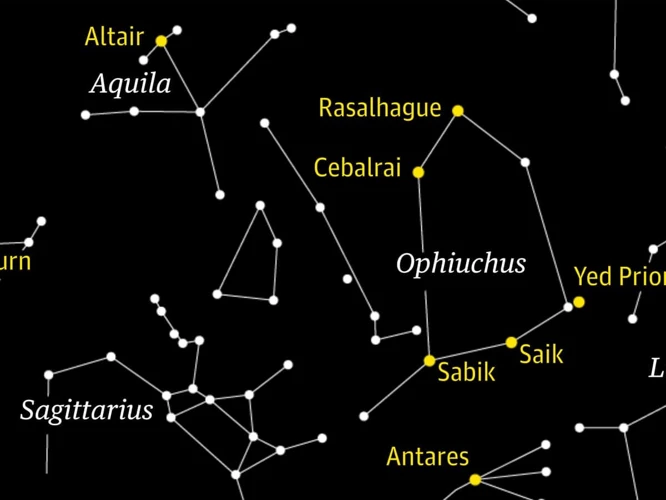
Interpreting Ophiuchus in astrology today has become a topic of debate and intrigue. While traditional Western astrology recognizes only 12 zodiac signs, Ophiuchus has emerged as a potential 13th sign, challenging traditional astrological interpretations. Proponents of Ophiuchus argue that its inclusion would better align astrology with the actual movements of the sun and the stars. Those born under the sign of Ophiuchus are believed to possess unique personality traits and characteristics. Often described as mysterious and charismatic, individuals influenced by Ophiuchus are said to possess strong intuition and healing abilities. They are believed to be natural healers, drawn to professions that involve mental, physical, or spiritual healing. Ophiuchus is associated with transformation, rebirth, and spiritual awakening. The symbol of Ophiuchus, a serpent intertwined around a staff, is believed to represent the balance between life and death, as well as the power of healing and renewal. Despite its potential significance, the inclusion of Ophiuchus remains a topic of ongoing discussion and interpretation within the astrological community. Some astrologers choose to incorporate Ophiuchus into their readings, while others adhere to the traditional zodiac system. As astrology continues to evolve and adapt to modern perspectives, the exploration of Ophiuchus and its potential influence on individual horoscopes provides a compelling avenue for further study and reflection on the mysteries of the cosmos.
Ophiuchus as the 13th Zodiac Sign
Ophiuchus as the 13th Zodiac sign has been a topic of controversy and debate in the world of astrology. Traditionally, the Zodiac consisted of 12 signs, each aligned with a specific period of the year. However, the presence of Ophiuchus challenges this traditional system and raises questions about its incorporation into astrological interpretations. Ophiuchus is associated with individuals born between November 29th and December 17th, overlapping with the signs of Sagittarius and Scorpio. Those who align themselves with Ophiuchus as a Zodiac sign believe that it brings distinct traits and characteristics to those born under its influence. According to astrologers, Ophiuchus individuals are known for their wisdom, healing abilities, and a desire to uncover hidden truths. They are believed to possess a deep connection with spirituality and possess a natural affinity for the metaphysical. However, it is important to note that the inclusion of Ophiuchus as a Zodiac sign is not universally accepted, and many astrologers continue to adhere to the traditional 12 sign system. The debate surrounding Ophiuchus as the 13th Zodiac sign continues to captivate both astrologers and astrology enthusiasts alike, as they delve into the complexities of this celestial enigma.
Ophiuchus Traits and Characteristics
When it comes to Ophiuchus traits and characteristics in astrology, there is a growing body of interpretations and speculation surrounding this enigmatic zodiac sign. Ophiuchus is believed to share traits with Sagittarius and Scorpio due to its position in the sky between them. Individuals born under Ophiuchus are often described as passionate, magnetic, and intuitive. They possess a natural affinity for healing and are driven by a deep desire to help others. Ophiuchus individuals are known for their wisdom, insight, and ability to handle complex situations with ease. They possess strong spiritual inclinations and are likely to have a deep understanding of the unseen realms. Ophiuchus people are often seen as natural leaders, with an inherent ability to inspire and guide others towards personal growth and transformation. While Ophiuchus is not officially recognized as a zodiac sign in Western astrology, many astrologers have started to explore its influence and incorporate it into their readings. As the world of astrology expands, Ophiuchus continues to captivate and intrigue enthusiasts with its unique personality traits and potential cosmic influences.
Conclusion

In conclusion, the influence of Ophiuchus on astronomy and astrological interpretations is a captivating and multifaceted topic that continues to intrigue scholars, astronomers, and astrology enthusiasts alike. The Ophiuchus constellation, with its rich mythological origins and celestial wonders, has played a significant role in ancient astronomy and astrology across different cultures. While its inclusion as the 13th zodiac sign in modern astrology remains debated, Ophiuchus has sparked conversations about the potential for expanding our understanding of the zodiac. Its presence in popular culture, literature, and art further demonstrates the lasting impact and fascination surrounding Ophiuchus. From scientific discoveries to mythological interpretations, Ophiuchus serves as a gateway to explore the vast wonders of the cosmos and dive deeper into the mysteries of the universe. So, let Ophiuchus be a reminder to embrace curiosity, curiosity that fuels the exploration of the night sky and the ever-expanding realm of astrology.
Frequently Asked Questions

1. Is Ophiuchus a part of the zodiac?
No, Ophiuchus is not traditionally considered one of the zodiac signs. It lies along the ecliptic, the path the Sun appears to take across the sky, but the zodiac typically consists of twelve signs.
2. What is the mythological significance of Ophiuchus?
Ophiuchus is associated with the Greek myth of Asclepius, the god of medicine and healing. Asclepius was said to have the power to resurrect the dead, which angered the gods, leading to his transformation into the constellation.
3. How many stars are in the Ophiuchus constellation?
Ophiuchus is home to many stars, but its most notable ones include Rasalhague, Barnard’s Star, and Kepler’s Supernova Remnant. The constellation boasts a rich star cluster known as Messier 10 as well.
4. Can Ophiuchus be seen from both hemispheres?
Yes, Ophiuchus is visible from both the northern and southern hemispheres, although it is better observed from the southern parts of the Earth.
5. Does Ophiuchus have any neighboring constellations?
Yes, Ophiuchus has several neighboring constellations, including Serpens, Hercules, Aquila, and Scorpius. These constellations often intertwine in mythological tales and astronomical observations.
6. Has Ophiuchus played a role in any significant scientific discoveries?
Ophiuchus has been a subject of interest for scientists, but its direct influence on major discoveries is limited. However, its position along the ecliptic has drawn attention to the concept of a potential 13th zodiac sign.
7. Can Ophiuchus be seen with the naked eye?
Yes, many of the stars and features of Ophiuchus can be seen with the naked eye, especially in areas with minimal light pollution. Its bright stars and distinct shape make it easily recognizable.
8. Does Ophiuchus have any cultural significance?
Ophiuchus has cultural significance in various traditions and has been celebrated in art, literature, and astrology. Its association with healing and medicine has influenced many cultural depictions throughout history.
9. Are there any notable deep-sky objects in Ophiuchus?
Yes, Ophiuchus is home to several notable deep-sky objects. In addition to the aforementioned Messier 10 cluster, there are also globular clusters like Messier 9 and Messier 19, as well as the dark nebulae known as the Pipe Nebula.
Astronomers continue to study Ophiuchus and its celestial features to gain a deeper understanding of its stellar formations, as well as its relationship to nearby constellations. Ongoing research helps uncover more about this captivating region of the night sky.
References
No, Ophiuchus is not traditionally considered one of the zodiac signs. It lies along the ecliptic, the path the Sun appears to take across the sky, but the zodiac typically consists of twelve signs.
2. What is the mythological significance of Ophiuchus?
Ophiuchus is associated with the Greek myth of Asclepius, the god of medicine and healing. Asclepius was said to have the power to resurrect the dead, which angered the gods, leading to his transformation into the constellation.
3. How many stars are in the Ophiuchus constellation?
Ophiuchus is home to many stars, but its most notable ones include Rasalhague, Barnard’s Star, and Kepler’s Supernova Remnant. The constellation boasts a rich star cluster known as Messier 10 as well.
4. Can Ophiuchus be seen from both hemispheres?
Yes, Ophiuchus is visible from both the northern and southern hemispheres, although it is better observed from the southern parts of the Earth.
5. Does Ophiuchus have any neighboring constellations?
Yes, Ophiuchus has several neighboring constellations, including Serpens, Hercules, Aquila, and Scorpius. These constellations often intertwine in mythological tales and astronomical observations.
6. Has Ophiuchus played a role in any significant scientific discoveries?
Ophiuchus has been a subject of interest for scientists, but its direct influence on major discoveries is limited. However, its position along the ecliptic has drawn attention to the concept of a potential 13th zodiac sign.
7. Can Ophiuchus be seen with the naked eye?
Yes, many of the stars and features of Ophiuchus can be seen with the naked eye, especially in areas with minimal light pollution. Its bright stars and distinct shape make it easily recognizable.
8. Does Ophiuchus have any cultural significance?
Ophiuchus has cultural significance in various traditions and has been celebrated in art, literature, and astrology. Its association with healing and medicine has influenced many cultural depictions throughout history.
9. Are there any notable deep-sky objects in Ophiuchus?
Yes, Ophiuchus is home to several notable deep-sky objects. In addition to the aforementioned Messier 10 cluster, there are also globular clusters like Messier 9 and Messier 19, as well as the dark nebulae known as the Pipe Nebula.
Astronomers continue to study Ophiuchus and its celestial features to gain a deeper understanding of its stellar formations, as well as its relationship to nearby constellations. Ongoing research helps uncover more about this captivating region of the night sky.
References
Frequently Asked Questions

1. Can Ophiuchus be seen in the night sky?
Yes, Ophiuchus is visible in the night sky, particularly in the summer months in the northern hemisphere.
2. How was Ophiuchus discovered?
Ophiuchus has been known since ancient times and its discovery is attributed to early astronomers who observed the stars and constellations in the night sky.
3. Why is Ophiuchus not included in the traditional zodiac signs?
The traditional zodiac signs are based on the path of the sun as it appears to move through the sky over the course of a year. Ophiuchus lies along this path but was not included as one of the twelve zodiac signs.
4. Does Ophiuchus have a significant influence on astrology?
Ophiuchus has gained some recognition in modern astrology, with some astrologers considering it as the thirteenth zodiac sign. However, its influence and interpretation vary among different astrological practitioners.
5. Is Ophiuchus associated with any specific traits or characteristics?
Some astrologers believe that individuals born under Ophiuchus may possess traits such as being transformative, intuitive, and having the potential for spiritual growth.
Ophiuchus is home to several notable celestial objects, including the Barnard’s Star, a red dwarf star that is one of the closest stars to our solar system, and the Kepler-10 system, which contains the first confirmed rocky exoplanet.
7. How has Ophiuchus been portrayed in literature and art?
Ophiuchus has often been associated with the physician Asclepius in Greek mythology. The constellation has been depicted in various literary works and artworks, symbolizing healing and the pursuit of knowledge.
8. Has Ophiuchus made an impact on popular media?
Ophiuchus has garnered attention in popular culture, appearing in films, books, and television shows where it is often portrayed as a mysterious and enigmatic figure.
9. Can Ophiuchus be incorporated into horoscope readings?
Some astrologers include Ophiuchus in horoscope readings, offering interpretations and predictions for individuals born under this sign. However, its inclusion is not universally accepted in the astrological community.
10. Is there a controversy surrounding Ophiuchus and the Zodiac?
Yes, the inclusion of Ophiuchus as a thirteenth zodiac sign has sparked discussions and debates within the astrological community. Some argue for its inclusion, while others maintain the traditional twelve-sign system.

